Grafham WTW Resilience (2016)
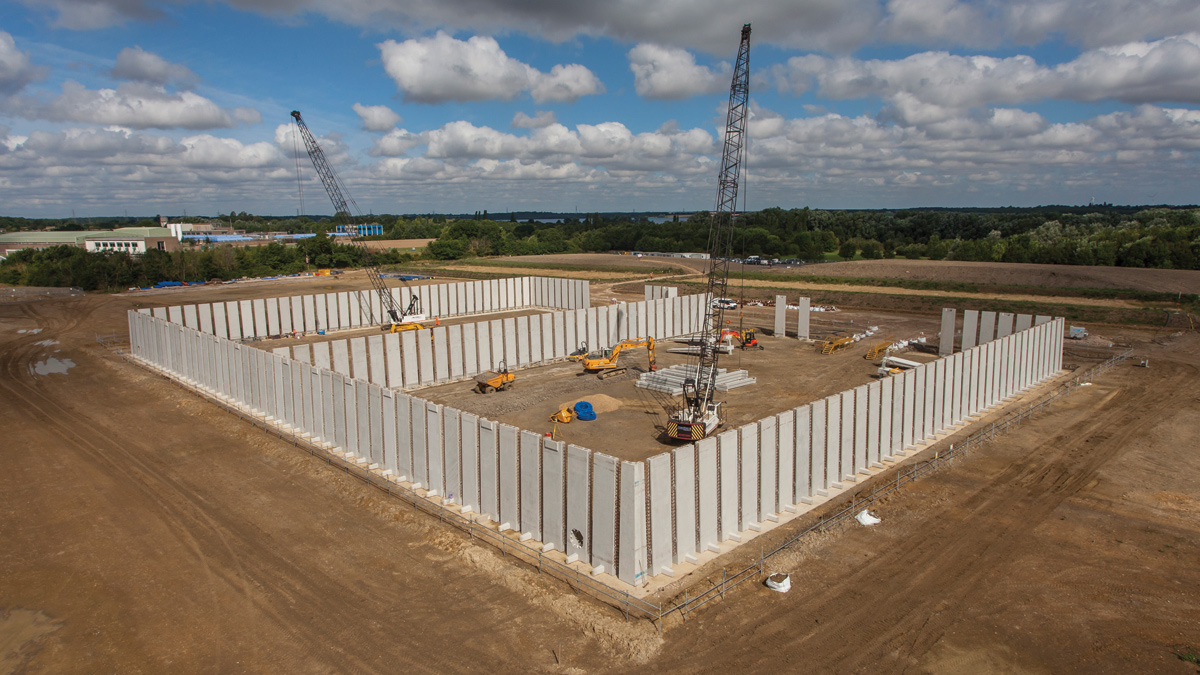
Grafham Service Reservoir under construction - Courtesy of JN Bentley Ltd
Grafham WTW is located near Huntingdon and serves a population of 829,000, including Northampton, Huntingdon and Bedford. It is estimated that approximately 614,000 of these would be affected by a major outage at Grafham WTW. As part of Anglian Water’s AMP5 Final Business Plan programme, the Grafham WTW Resilience scheme was identified to mitigate the effect of a major outage to the works. The scheme is being delivered through Anglian Water’s Special Projects framework, a partnered arrangement with Anglian Water. Mott MacDonald is the principal designer and JN Bentley is the principal contractor, with an approximate project value of £27.8m.
Optioneering
During the optioneering stage, the full regional supply system was considered to assess transfer options across the network. The original solution was to construct a new 37km long 1,100mm diameter pipeline from Hannington Water Reservoir (WR) to Grafham WTW; however the route to be taken would have faced significant logistical challenges including river crossings and urbanised environments, and would therefore have been an extremely expensive and risk-laden solution to implement.
However, as part of this exercise a solution was identified whereby the project could utilise and adapt existing assets to deliver the required scope of the project. Following a large scale flow reversal network trial in 2012, it was proved that existing Anglian Water assets could be used to reverse the required water into a new service reservoir to be constructed next to Grafham WTW during a resilience event.
The key asset utilised was the 36km 900mm diameter Grafham WTW to Hannington WR pipeline. By adopting this solution it saved approximately £20m in CAPEX and drove a 50% reduction of embodied carbon from the final business plan/baseline solution originally planned for the project.
The Grafham to Hannington pipeline is a critical strategic transfer pipeline in Anglian Water’s network. The main, constructed in 1967, is bitumen lined/coated steel jointed along the route with couplings.
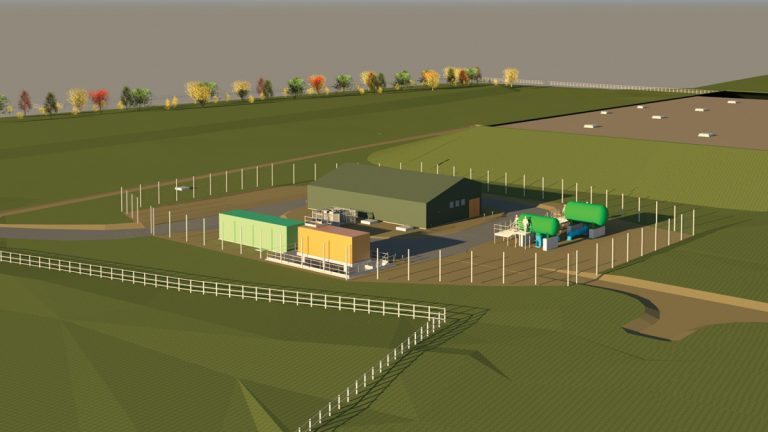
3D model of the new facility at Grafham – Courtesy of JN Bentley Ltd
Due to the strategic nature of the transfer main, condition assessments needed to be undertaken on the pipeline whilst it continued to deliver potable water to customers. For this reason, three sets of non-destructive testing were commissioned, carefully designed to have no impact on the day-to-day operation of the main:
- Specialist CCTV surveys of two 400m lengths of main whilst still in service – the first time that this had been undertaken in the AWS region.
- Ground-level direct current voltage gradient (DCVG) surveys to identify points of external coating failure on the main.
- Non-destructive wall thickness surveys, limited to the locations identified from previous investigations.
Flow reversal trial
The flow reversal trial was critical to demonstrate the feasibility of the proposed project solution. The flow reversal trial was also to be undertaken without affecting customers’ water supply.
As the trial was required to be undertaken ‘live’ to customers, the project team developed an innovative method of mitigating the risk to customers of raised turbidity. Polypropylene cartridge filters were being used as an emergency portable filter where borehole extractions were not meeting standards elsewhere in Anglian Water. These filters had not previously been used in network applications, but were identified as being able to provide suitable protection against the risk of raised turbidity during the flow reversal trial.
A high level methodology was developed and agreed with Anglian Water senior management team to undertake the trial over a single night with a staged increase in flow rate up to 50Ml/d. There would be staged water quality monitoring along the main and 1µm rated polypropylene cartridge filters would be installed on each of the 8 (No.) off-takes between Grafham and Wellingborough to protect 35,000 customers from raised turbidity during the flow reversal trial.
The pipeline could not be isolated to undertake this work. A population of 35,000 is fed directly from the Grafham to Wellingborough section of pipeline which had no facility to be rezoned onto a different section of the system. In addition, an alternative means of supply to Northampton was not available. As such, survey works and trials were required to be undertaken with the system in supply i.e. live to customers.
The flow reversal trial was successfully implemented overnight during March 2012 achieving a flow rate of 560l/s (velocity 0.9m/s) from Wellingborough to Grafham under static head from Hannington WR. This was in line with the predicted performance of the system by operational modelling and demonstrated the feasibility of the proposed solution.
During the flow reversal, measured turbidity within the Grafham to Wellingborough main was found to be elevated above normal values, although it remained less than 2NTU. Measured turbidity values taken downstream of the temporary cartridge filters showed the filters were effective in removing the elevated turbidity, therefore protecting customers.
The trial was recognised by Anglian Water’s Director of Water, Paul Valleley, describing it as: “a real benchmark in terms of planning complex live pipe work operations”, and a; “meticulous approach which resulted in a very thorough plan expertly executed”.
Detailed design/construction
The project is split over fifteen different sites, including four DfMA (design for manufacture and assembly) booster pumping stations (ranging from 8l/s to 160l/s) that are spread across the existing pipeline to ensure the correct flow rates are maintained once commissioned and operational.
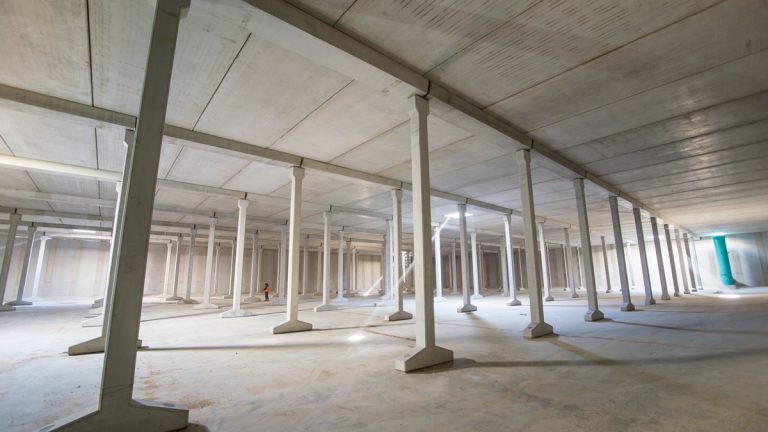
Interior of the new service reservoir – Courtesy of JN Bentley Ltd
One of the largest assets to be constructed on the project was the 40ML service reservoir at Diddington. The reservoir walls, columns and beams are constructed using precast concrete components manufactured by Carlow Precast (now FLI Precast Solutions). When construction is complete it will be the largest precast service reservoir in the Anglian Water region which will be capable of holding the equivalent amount of water as 16 Olympic-sized swimming pools. The construction methodology builds on JN Bentley’s experience of delivering other precast service reservoirs for other water industry clients.
Utilising the Design for Manufacture and Assembly (DfMA) agenda, it was possible to install 200 (No.) wall panels in less than four weeks on site. Arriving on site via articulated transportation, the units were unloaded with the use of an innovative load-angel which provides safe access for personnel onto the wagons to connect the crane’s lifting equipment to the unit. From there the units are lifted horizontally onto a bespoke cradle for safely rotating and lifting horizontally into place on the setting out strip.
Once in position, the precast wall panels were then stitched together through the utilisation of dual concrete pours for the infill panels. This was identified as the most efficient method for attaining the correct strength and quality of the infills as this element is critical to the retention of the water in the reservoir’s structure.
To facilitate water-tightness across the joints, hydrophilic strips were placed in a rebate cast into the precast elements at interfaces with in situ concrete. Upon contact with water, the strips expand by many times their original size, therefore providing an impermeable barrier against water ingress or egress.
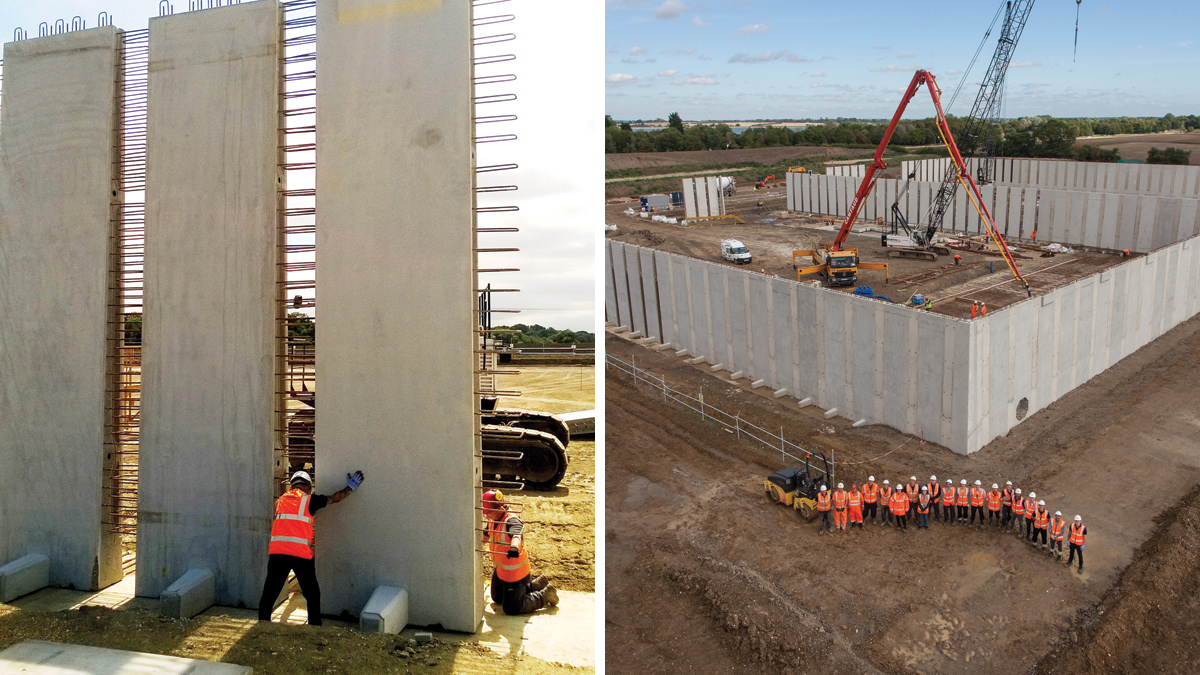
(left) Installation of precast concrete wall unit and (right) new service reservoir under construction – Courtesy of JN Bentley Ltd
Once complete, the base slab was cast and tied into the wall units via the cast-in protruding reinforcement bar in the feet of the units. Once cast, the one-piece precast columns were placed and secured to the base via dowels and temporarily braced with props. The roof beams were then placed on the beams and in the cast-in openings at the top of the respective wall units and dowelled in position. On top of the roof beams are the roof slabs which form the roof covering which is then covered in a concrete screed.
Once completed, the sides of the new reservoir will be fully covered with excavated material and landscaped to reduce the visual impact of the new structure on the local environment. This is especially important as Grafham Water and its surrounding areas are a hotspot for outdoor leisure pursuits and a significant tourist attraction within the area. During the construction phase visual screening was provided by an earth landscape bund for the same reason.
As part of the project JN Bentley has also constructed a new pumping station adjacent to the new service reservoir at the Diddington site. The new pumping station will have a capacity of 110 Ml/d. Should a resilience event occur, the new pumping station will deliver water to ensure a uninterrupted supply to Anglian Water customers.
Building information modelling (BIM)
4D modelling of construction sequencing was undertaken in Navisworks to help demonstrate to the client how the vast enabling works were to be managed on site efficiently, so as not to affect the overall programme. Walkthrough models using REVITZO were utilised at design progress meetings with all stakeholders to discuss design changes and any clashes with the client’s operational teams.
Detailed cut and fill analysis was conducted using Civil 3D to minimise material movement on site and optimise the new reservoir’s embedment. REVIT Structures was also utilised to model all site structures and ancillaries to allow detailed analysis of site general arrangements, materials take off.
Sustainability
The option selected for the scheme was adopted by Anglian Water as the single option solution to the PR09 Business Plan, providing a capital expenditure (CAPEX) saving of approximately 50% to the business plan figure and a 50% embodied carbon reduction.
This project is an excellent example of where exceptional value and innovation can deliver a more sustainable approach provided the client. By coordinating technical principles, comprehensive understanding of risks and close collaboration with all parties’ conventional thinking can be changed. And it is only through changing conventional thinking that sustainability can become intrinsic in our projects and our business.
Conclusion
The undertaking of the flow reversal trial on the 900mm diameter pipeline was one of the largest trials of its kind undertaken in the UK Water Industry. The successful implementation of this trial is due to two key factors:
- The collaborative, innovative approach adopted by the project team who actively pursued options often discarded in the ‘too hard, too risky’ box.
- The forward thinking, ‘can do’ approach adopted by Anglian Water Operations who actively integrated into the project team to successfully deliver the trial.
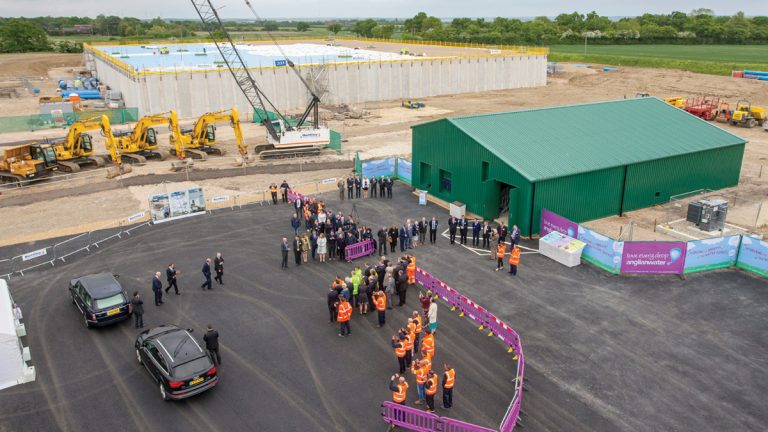
Royal visit by HRH Prince Philip, Duke of Edinburgh – Courtesy of JN Bentley Ltd
Due to the application of this approach by the project team, the project adopted a solution making most efficient use of existing assets whilst providing greatest future operational flexibility to Anglian Water. This, in conjunction with the new assets constructed and being commissioned across the resilience programme, will provide a sustainable solution to the on-going challenge faced by water companies of providing clean water 100% of the time.












